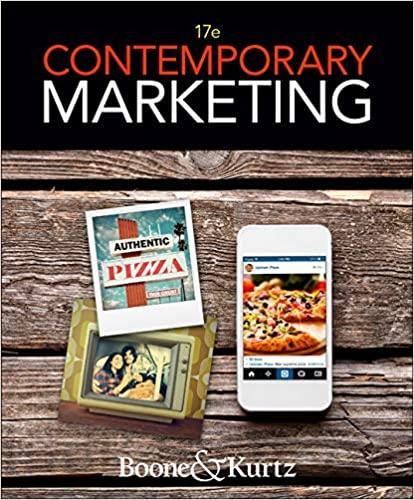He wants you to dig deeper than that, thinking about the quality and origin of fabrics you
Question:
He wants you to dig deeper than that, thinking about the quality and origin of fabrics you wear, their impact on the environment, and your own view of social responsibility as a consumer. Even if you can’t afford his clothes (created in one- or two-of-a-kind, limited editions), you can take away his messages about quality, value, service to the customer and community, and the importance of activism.
Now based in Italy—with easy access to the Paris fashion shows—Small began his career selling jeans at The Gap in Boston. Today, he shrugs off the marketing tactics of the large, name-brand clothing designers and retail outlets, which he believes do little or nothing to create utility for the consumer, because they hide the true cost of the clothes they are selling. “Corporate advertising has made people unaware of what they’re really spending their money on, and what things are really costing them,” says Small. Cheap fabrics, poor construction, and lack of attention to detail all add up to low prices and nearly disposable garments—costing consumers more money in the long run. “We have to re-educate a lot of consumers because what they think is cheap is not cheap at all,” asserts Small. “It’s the most expensive.”
Small’s clothing designs provide form utility by creating the highest-quality garments. Although customers often have to wait months for these hand-made garments, Small believes this is an asset. “Fifty years ago, machine-made products were perfect, new and exciting,” explains Small. That’s no longer the case. “We don’t care how long it takes,” he insists. “We don’t care what it costs. What we care about is that it’s the very, very best it can possibly be”— which is what his customers want. Consumers may view Small’s clothes in motion at runway shows or at a select group of exclusive retail shops, or they may communicate with him directly. When they take ownership of a suit or coat, they have a highly individualized piece of clothing that some might call a work of art. “Customers are screaming for something personal and special,” Small points out, “something that has a bond between one human being and another.”
Small views his relationships with customers as critical to his success, referring to them as the “best and only financial backers” a designer should have. Since his clothes are made to last decades—25 to 30 years—he looks toward developing customer relationships that will survive just as long. “We’re in a field where you normally do a lot of marketing,” he observes. “I think it’s more important to focus on great product, great service, value to the customer, and communicating with the customer honestly.” That honest communication—about his products and his beliefs—has built Small a devoted following.
It would be easy for Small to hide in his design studio sketching clothes for a few high-end customers who want the novelty of something edgy and different to wear, which could lead him into the quicksand of marketing myopia. But that’s not Small’s style. He looks for new ways to satisfy customers without compromising his ideals—in fact, he stitches his ideals right into the fabrics of his clothing. Small is a genuine activist for social causes as well as environmental sustainability, which has proved to be an effective tool for connecting with the people who appreciate his designs. Customers see his activism, and when they make a choice about where to spend their money, they choose his brand.
“That’s where we want to be positioned,” says Small. “We want to do more than just supply clothes. We want to play a role in the community.” Looking forward, Small believes it is his company’s responsibility to set an example for other businesses. “The biggest challenge now is not to compromise,” he admits, but “to focus on one piece at a time and make it the absolute best it can be.”
Questions.
1. Why is the link between relationship marketing and social responsibility so important to Small’s business success?
2. Geoffrey B. Small is an avant-garde designer and unconventional businessperson. What examples does he set, and what might marketers for large corporations learn from his views and practices?
Step by Step Answer:






